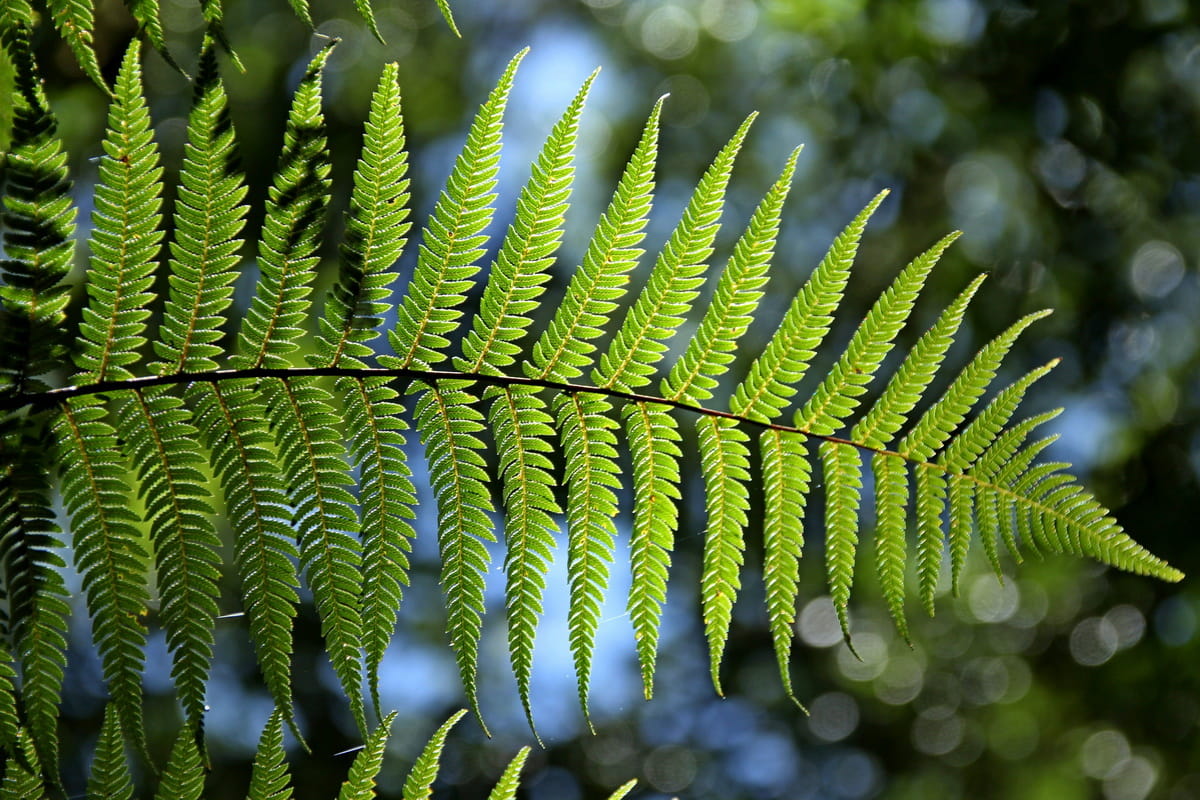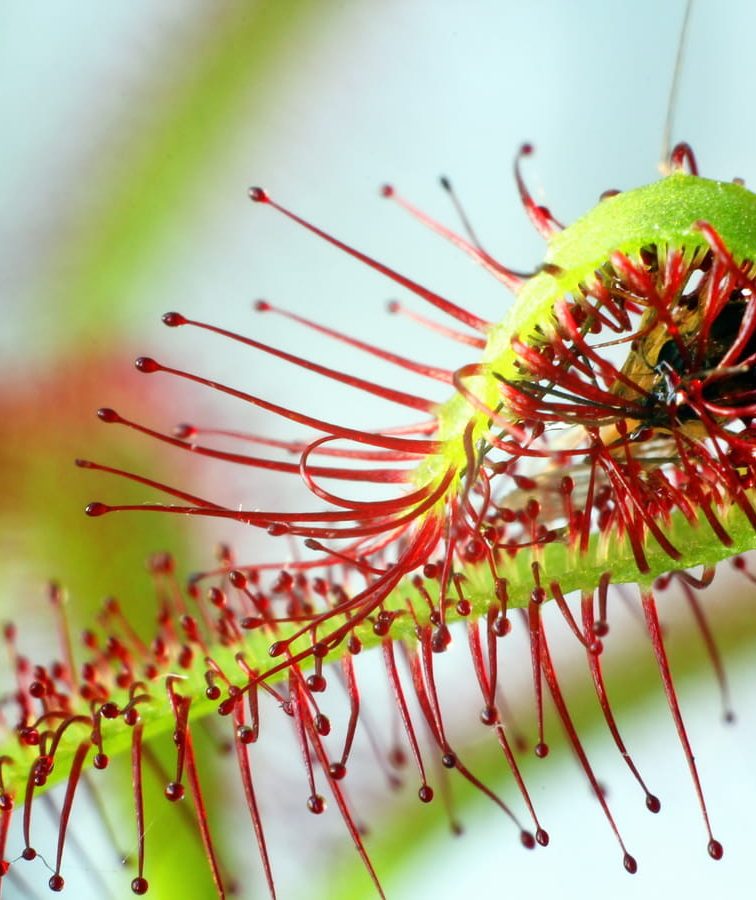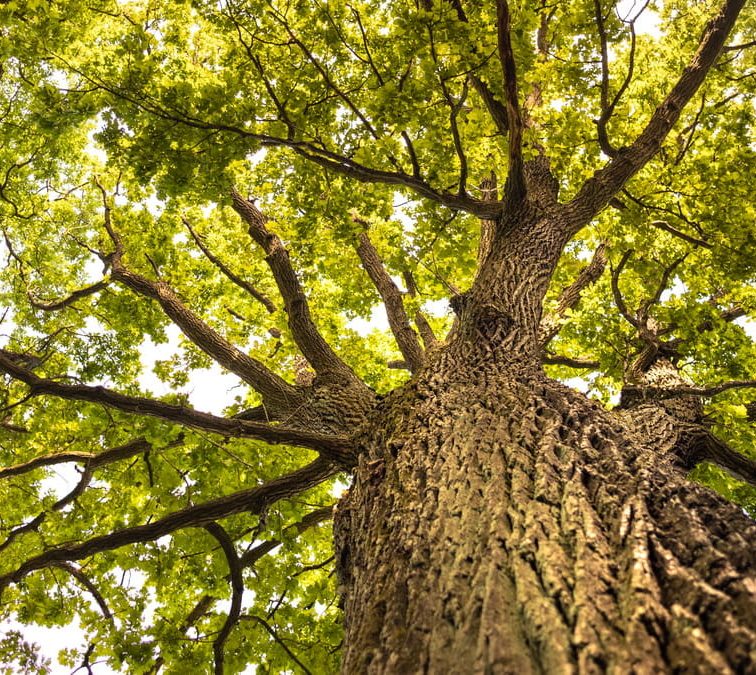Journey back in time, over 400 million years, and you’ll stumble upon the first ferns gracing our planet. These aren’t just your average backyard plants. Ferns have withstood the test of time, witnessed the rise and fall of dinosaurs, and even enjoyed the spotlight during the Victorian era. Intrigued?
From their captivating fossil records to their unconventional reproductive tactics, let’s embark on a journey packed with fun facts about ferns that are rooted in history, science, and a dash of elegance!
1. Ancient Players: Ferns in the Fossil Record
Ferns, undoubtedly, have an impressive lineage. Fossil evidence suggests that these plants date back over 400 million years, witnessing eras even before the dinosaurs roamed. The Carboniferous period, specifically around 360 million years ago, is often dubbed the “Age of Ferns” due to their dominance in those times.
These prehistoric fern imprints, preserved in sedimentary rocks, serve as a testament to their resilience and evolutionary success. The fossils provide a snapshot of the varieties that once flourished and are invaluable for botanical studies.
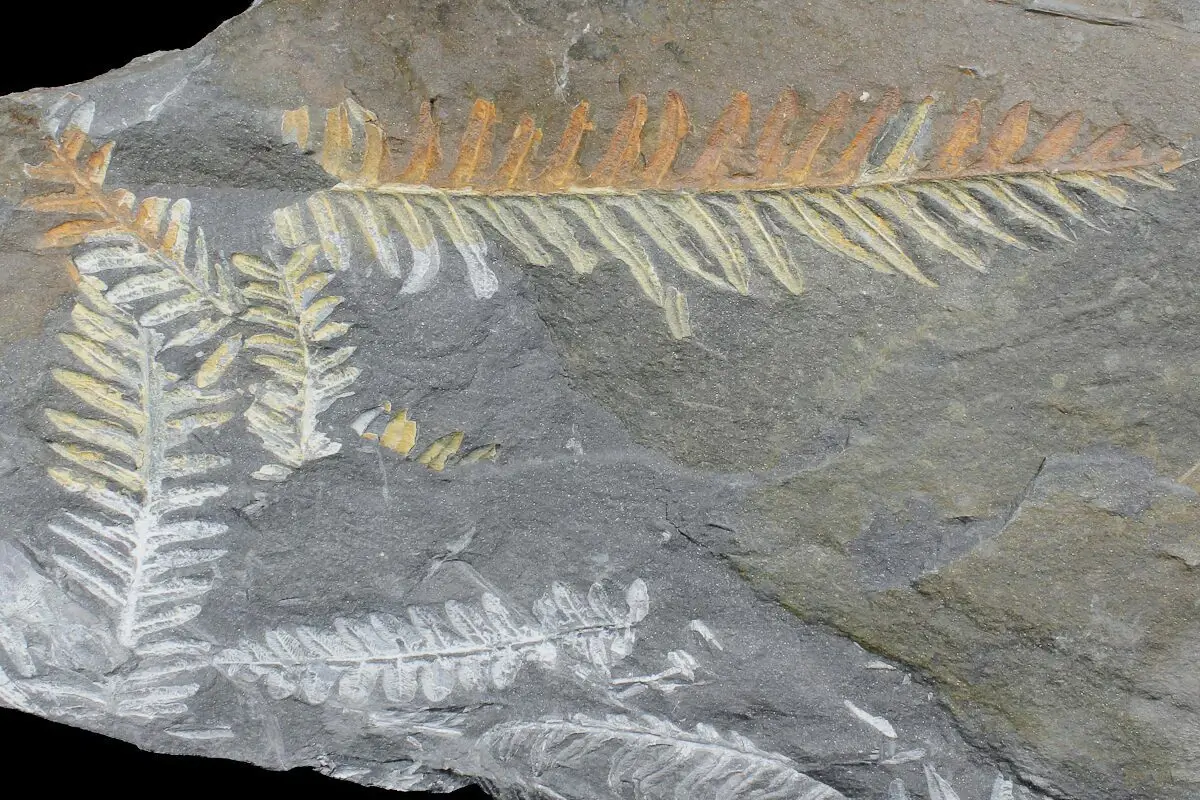
Image source: fossilera.com
2. Beyond the Seeds: How Ferns Reproduce Uniquely
Contrary to the popular seed-driven reproductive methods, ferns employ a spore-based strategy. Instead of seeds, the undersides of fern leaves, or fronds, contain sporangia – tiny sacs filled with minuscule spores. When mature, these spores are released and, upon finding a suitable habitat, germinate to form a structure called a prothallus.
In a study published in the American Journal of Botany, researchers revealed that a single fern could release as many as 50 million spores! Once germinated, the prothallus forms both male and female reproductive cells, highlighting the intricate dance of fern reproduction.
3. The Fern Hunt: Ferns in Victorian Era Popularity
The 19th century, particularly in Victorian Britain, saw a peculiar obsession with ferns. This phenomenon, coined “Pteridomania”, involved enthusiasts from every stratum of society avidly collecting, studying, and displaying ferns. Historical records indicate that by the mid-1800s, fern collecting had become a popular pastime, and the demand for these plants surged.
“Ferneries”, specialized glasshouses dedicated to fern cultivation, became common in British estates. The fern motif was also prominently featured in architecture, pottery, and even textiles of that era.

Image source: Wikimedia Commons
4. Luscious Locks: Maidenhair Ferns and Their Beauty
The Maidenhair fern, scientifically known as Adiantum, stands out with its delicate, lacy fronds and glossy, dark stems. Its moniker ‘Maidenhair’ is derived from its hair-like stalks, reminiscent of a maiden’s tresses. Historical texts often associate this fern with elegance, frequently used as a decorative plant in indoor spaces.
Beyond its beauty, the Maidenhair fern has been utilized in traditional medicine for respiratory and hair issues. Its unique appearance and therapeutic properties have made it a sought-after species among plant enthusiasts and herbalists alike.
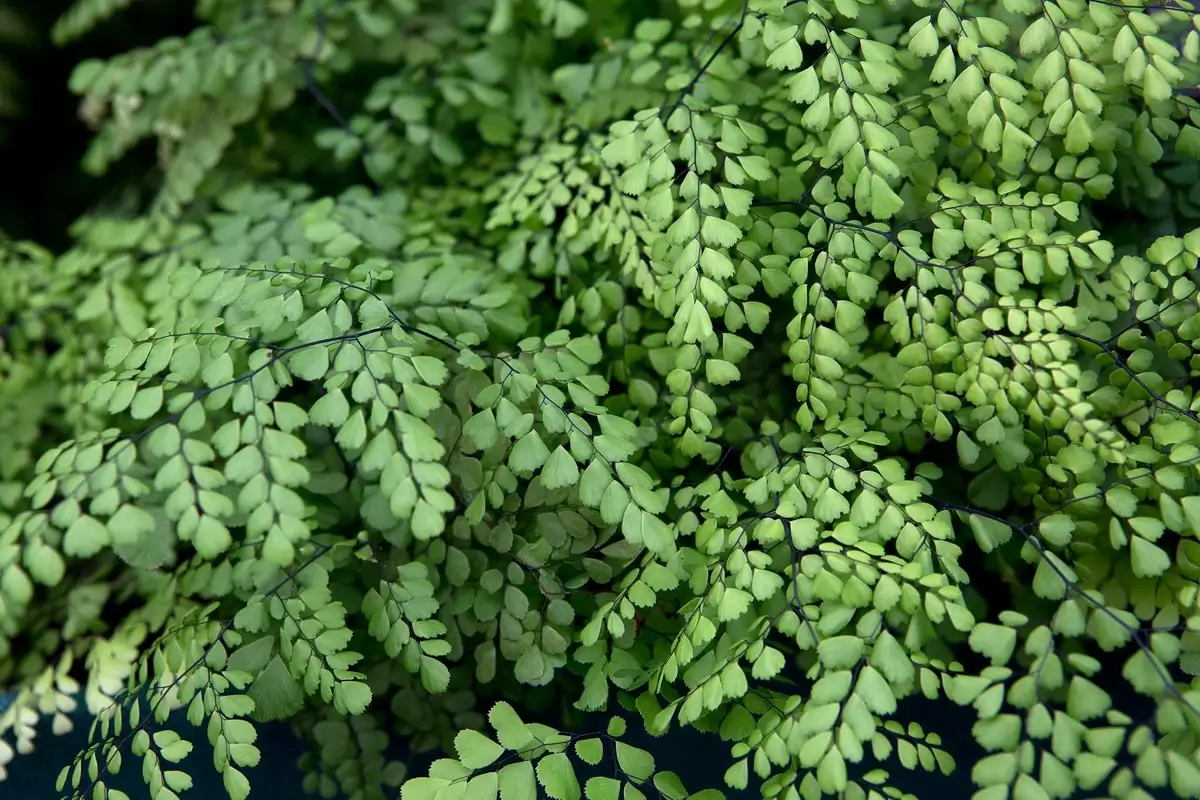
Image source: ersportsman.com
5. Water Wonders: Ferns That Truly Love Moisture
The world of ferns brims with species that thrive in damp, moisture-laden environments. These hydrophilic ferns, like the Marsh Fern (Thelypteris palustris) and the Royal Fern (Osmunda regalis), flourish beside water bodies, in marshes, and other wetlands. Their affinity for water allows them to grow in places many plants can’t.
Besides being visually stunning, these ferns play a crucial ecological role, helping in soil stabilization and providing habitats for various aquatic creatures. Their preference for wet grounds makes them invaluable indicators of water quality in ecosystems.
6. Survivalists: The Remarkable Resurrection Fern
The Resurrection fern, Pleopeltis polypodioides, boasts a jaw-dropping survival tactic. Native to the southeastern United States, this fern can lose up to 97% of its water content during droughts, appearing shriveled and dead. However, once watered or exposed to rainfall, it springs back to life within hours, fully rejuvenated!
Research conducted at the University of North Carolina emphasized the fern’s cellular structure and its ability to withstand extreme dehydration. Its unique survival mechanism serves as a topic of intrigue among botanists and environmental scientists.

Image source: Wikipedia
7. High-Flyers: Ferns Growing in Trees
Epiphytic ferns, those that grow on other plants (mainly trees) without being parasitic, are the high-flyers of the fern world. The Bird’s Nest Fern (Asplenium nidus) is a classic example, growing majestically on tree trunks in tropical forests. Instead of sapping nutrients from the tree, these ferns gather sustenance from the air, rain, and the organic debris that accumulates around them.
This unique adaptation allows them to thrive in areas where ground space is limited or competition is fierce, showcasing the diverse strategies ferns employ to survive and flourish.

Image source: alltheplants4.blogspot.com
8. High and Mighty: The Majestic Tree Ferns
Unlike their smaller counterparts, tree ferns grow tall and proud, with some species reaching up to 82 feet in height! Predominantly found in tropical and subtropical regions, tree ferns like Cyathea and Dicksonia have been gracing our planet for nearly 360 million years, as per fossil records.
Interestingly, while they tower over other plants, tree ferns don’t develop woody tissue like most trees. Instead, they possess a fibrous trunk made of interwoven roots, emphasizing their uniqueness in the plant kingdom.
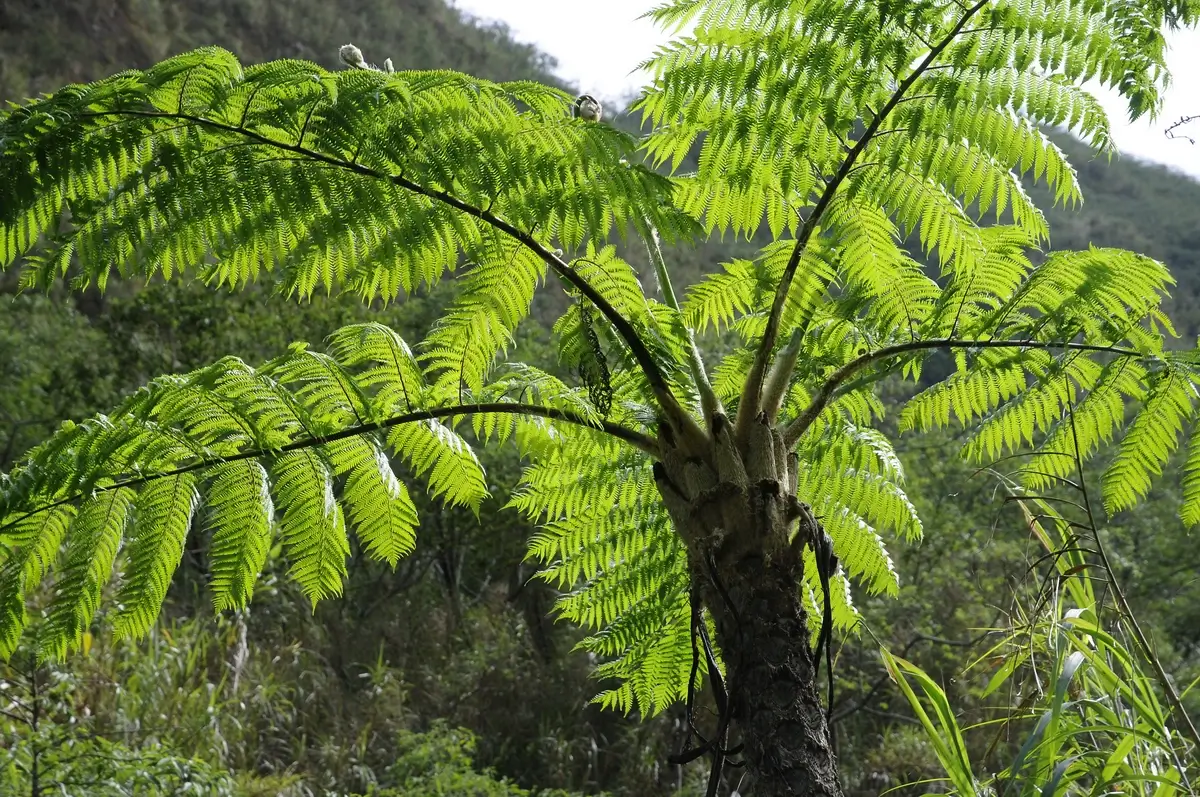
Image source: mavink.com
9. Warrior Plants: Ferns in Ancient Medicinal Uses
Ferns have been warriors in the realm of traditional medicine for centuries. Various cultures have tapped into their potential benefits, from treating wounds to alleviating digestive issues. For instance, the roots of the Male Fern (Dryopteris filix-mas) were used in ancient Europe as a remedy for internal parasites.
Moreover, in traditional Chinese medicine, ferns like the Licorice Fern have been incorporated into remedies for respiratory conditions. However, while many of these uses are steeped in tradition, modern pharmacology continues to explore the potential medicinal properties and applications of ferns.
10. Not a True Fern: The Misleading Asparagus Fern
Despite its name, the Asparagus fern isn’t a fern at all! Belonging to the lily family, its proper name is Asparagus aethiopicus. This plant gained its ‘fern’ title due to its fern-like, feathery foliage. Originating from South Africa, it’s often cultivated as an ornamental plant and can even produce small, white flowers and berries.
Botanists and horticulturists emphasize the importance of not letting names deceive us. While the Asparagus fern mimics the appearance of true ferns, its reproductive and growth patterns set it distinctly apart.

Image source: plantdaddypodcast.com
11. A Fern for Each Day: Over 10,000 Fern Species!
Diversity is the name of the game when it comes to ferns. With over 10,000 recognized species, the fern family offers a rich tapestry of forms, sizes, and habitats. From tiny aquatic ferns barely a few centimeters tall to the towering tree ferns, there’s a fern species for nearly every terrestrial environment on Earth.
This diversity has been a treasure trove for researchers and enthusiasts alike, offering insights into evolution, ecology, and even biogeography. Every fern species carries with it a unique tale of adaptation, survival, and ecological importance.
12. No Candy Here: The Sweetly-Named Licorice Fern
With a name that conjures up images of sugary treats, the Licorice fern (Polypodium glycyrrhiza) might disappoint candy enthusiasts. This fern doesn’t sprout candies, but it does have roots with a distinct licorice-like flavor. Native to the western regions of North America, it often grows on tree trunks, basking in the rainforest’s moist ambiance.
Historically, Indigenous peoples utilized the fern’s roots for medicinal purposes, valuing them for their supposed soothing properties. While it’s not a candy store delight, this fern surely holds a sweet spot in botanical circles.
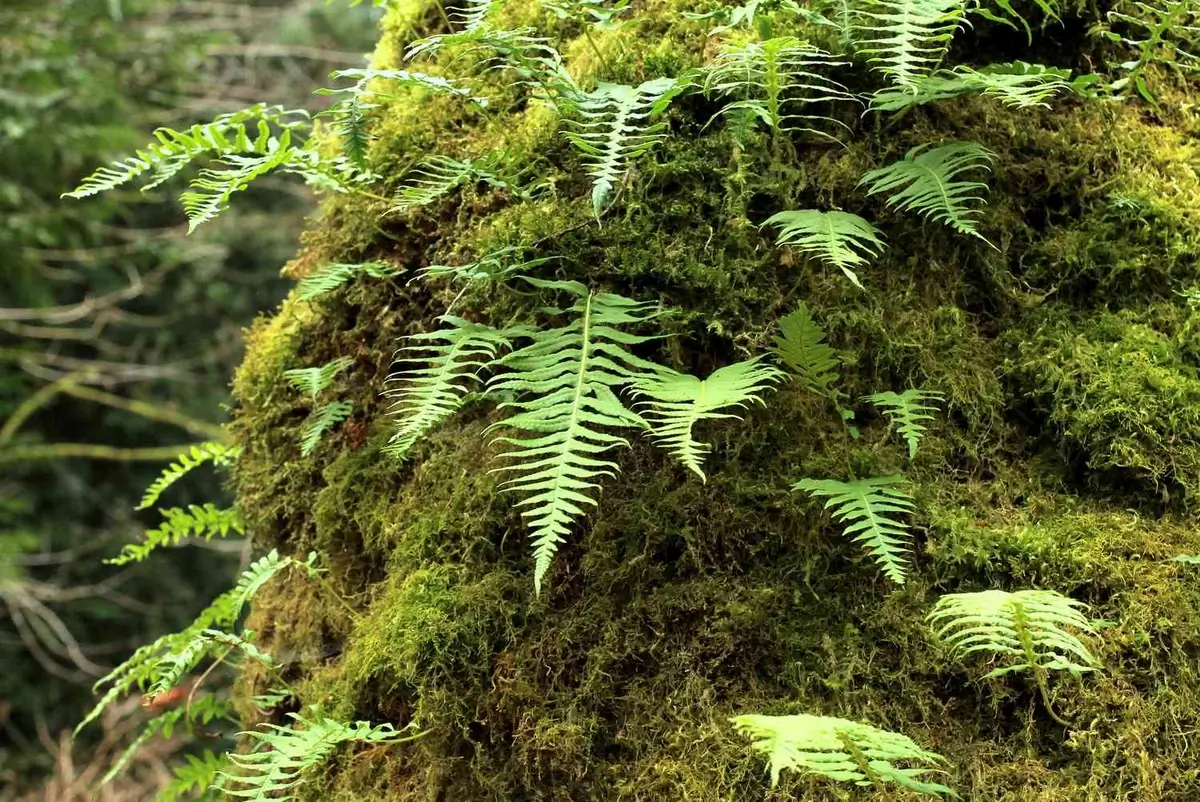
Image source: thespruce.com
13. Vascular Victors: Ferns as Key Vascular Plants
In the botanical hierarchy, ferns shine as prominent members of the vascular plants, a group distinguished by their ability to transport water and nutrients through specialized systems. Unlike simpler plants, ferns possess xylem and phloem, conducting tissues that aid in nutrient distribution and water movement.
This advanced vascular system has been a cornerstone of ferns’ evolutionary success. It allows them to achieve greater sizes and adapt to a myriad of environments, from arid deserts to lush rainforests. Ferns, with their intricate vascular networks, truly embody the sophistication of plant evolution.
14. A Lady’s Charm: The Elegant Lady Fern
Beauty, grace, and elegance are what the Lady fern (Athyrium filix-femina) encapsulates. Flourishing in the temperate regions of the Northern Hemisphere, this fern exhibits a lace-like pattern on its fronds, earning its genteel name. Interestingly, the Lady fern is known for its adaptability, thriving in a range of soils and light conditions.
In Victorian times, the Lady fern was considered a symbol of elegance and was prominently featured in gardens and indoor plant collections. Its intricate patterns and lush greenery continue to captivate gardeners and plant enthusiasts.
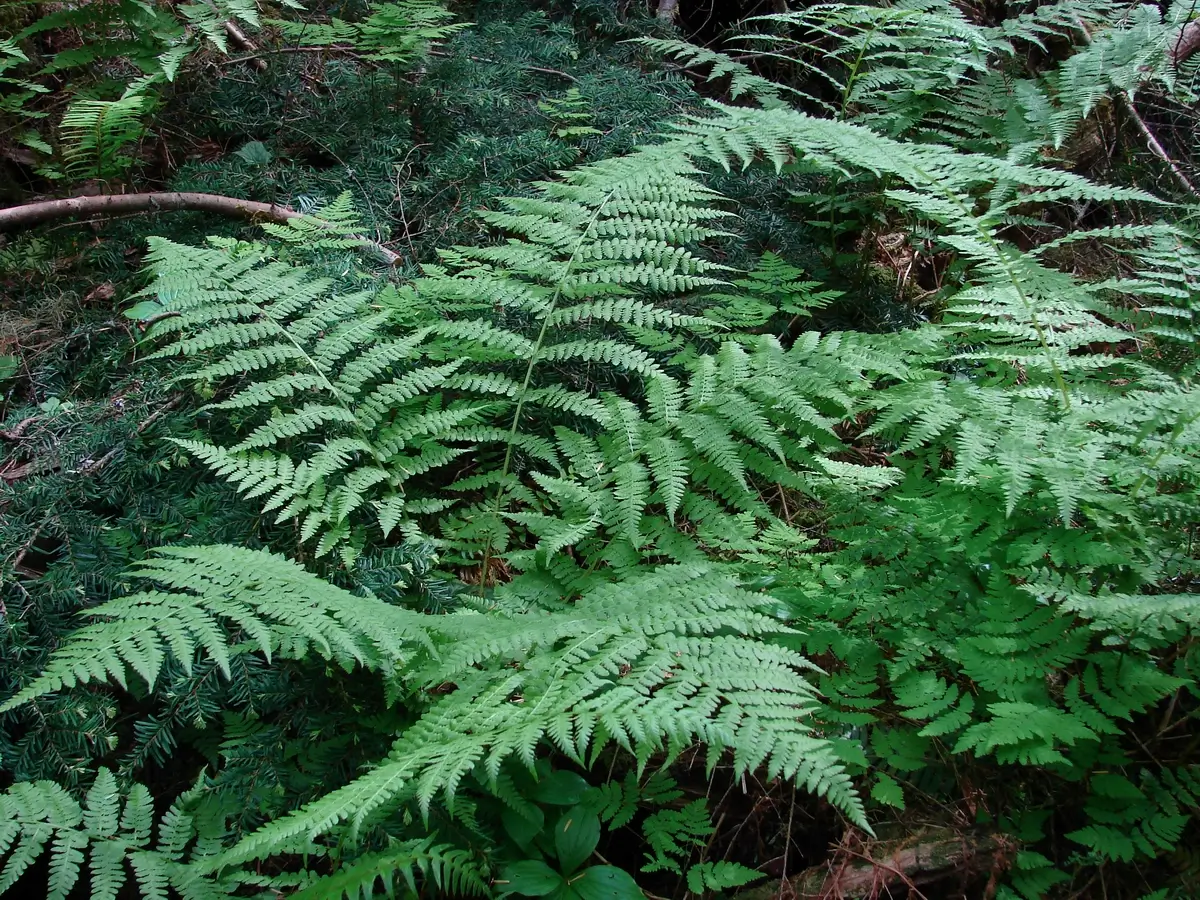
Image source: Wikimedia Commons
15. Sunbathing in Style: Sun-Loving Fern Varieties
While many envision ferns nestled in shaded, damp nooks, some species break the mold by basking under the sun. These sun-loving ferns, like the Bracken Fern and Painted Fern, have evolved to withstand and even thrive in direct sunlight. Their unique frond structures and pigmentations act as built-in sunscreens, protecting them from potential harm.
These sun-adapted ferns contribute to the diverse tapestry of sunny meadows, hillsides, and open woodlands, proving that ferns are versatile enough to shine both in the shadows and the sun.
16. Widespread Wanderer: The Ubiquitous Bracken Fern
Meet the Bracken fern (Pteridium aquilinum), one of the most widespread ferns on the planet. From mountain peaks to open meadows, this fern pops up almost everywhere, spanning across five continents. Despite its ubiquity, the Bracken fern has a controversial reputation. While it’s a hardy survivor, studies have indicated that it can be toxic to livestock when consumed in large quantities.
Its adaptability has been a topic of research in ecological circles, and its presence in both folklore and traditional medicine makes it a fern of multifaceted importance.
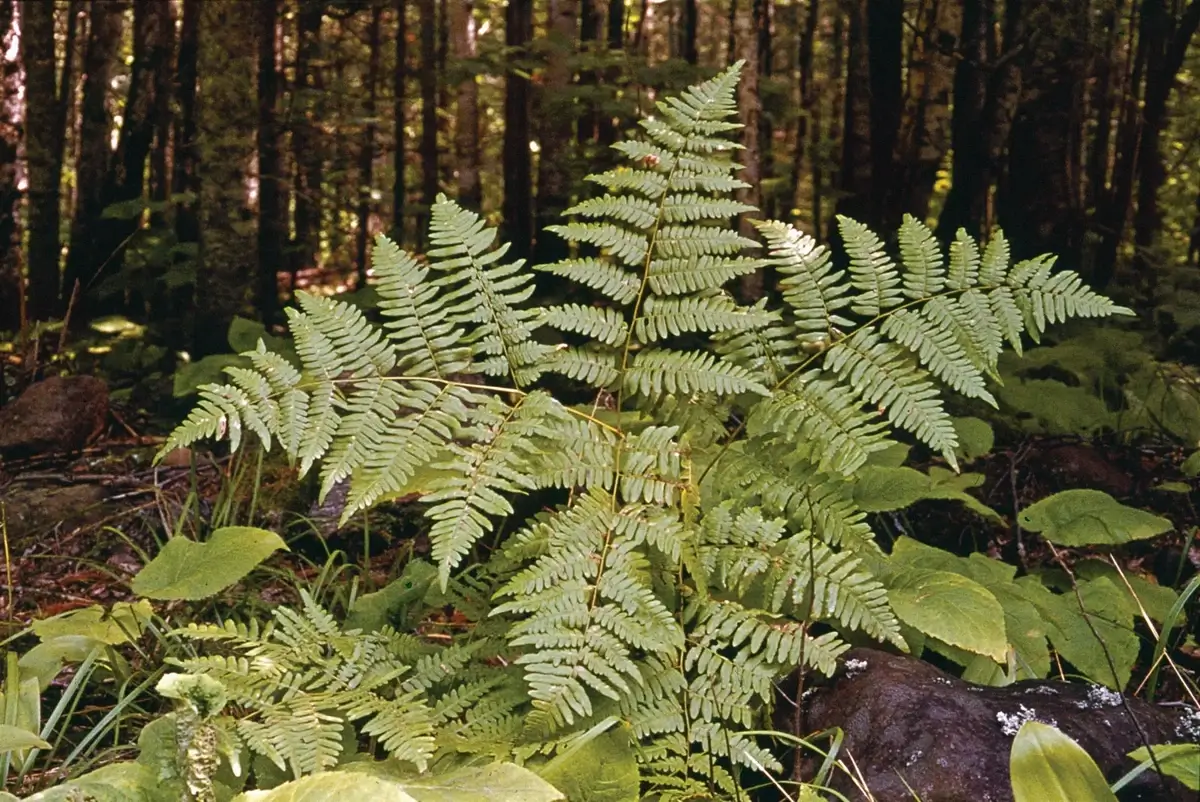
Image source: Britannica
17. Kingdom of Green: No Flowers or Seeds for Ferns
Enter the realm of ferns, and you’ll notice a distinct absence: flowers and seeds. Unlike most plants we’re familiar with, ferns reproduce through spores, tiny reproductive units found underneath their fronds. This method of reproduction, dating back millions of years, is both ancient and efficient.
This non-flowering, non-seeding characteristic sets ferns apart in the plant kingdom, offering a glimpse into the evolutionary pathways of plant reproduction. In a world dominated by flowering plants, ferns stand as emblems of an older, yet enduring, botanical lineage.
18. Boston’s Beauty: The Ever-Popular Boston Fern
Boston might be renowned for its baked beans and rich history, but in the botanical world, it’s the Boston fern (Nephrolepis exaltata) that steals the show. Introduced to the commercial plant trade in the late 19th century, this fern, with its arching fronds and lush greenery, quickly became a household favorite. Not native to Boston, its moniker is credited to its popularity surge in the city.
Today, the Boston fern is a staple in homes and offices alike, lauded for both its aesthetic appeal and its ability to purify indoor air, as highlighted in NASA’s Clean Air Study.
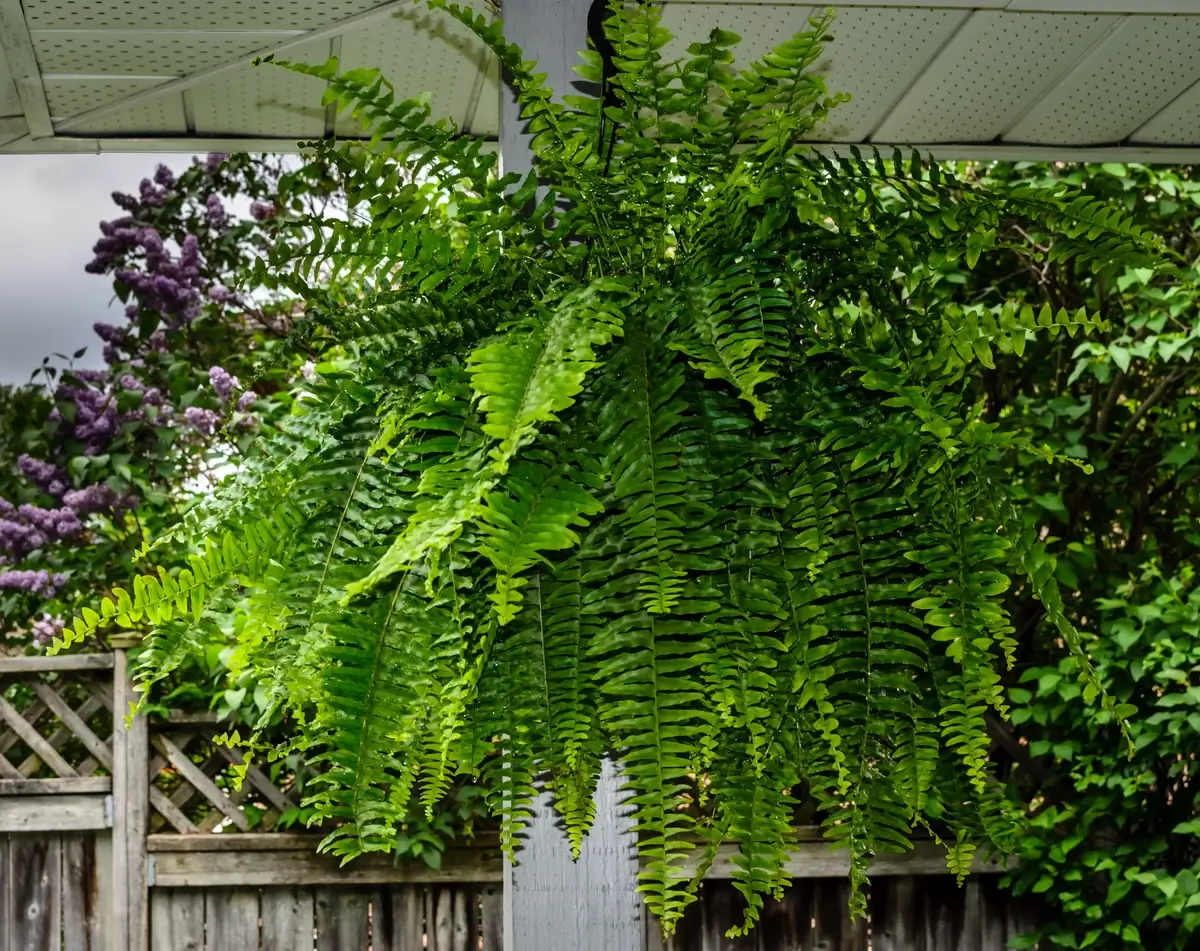
Image source: diybunker.com
19. Nature’s Carpet: Ground-Covering Ferns
Ferns don’t always reach for the skies; some prefer hugging the earth, creating verdant carpets across forest floors. Ground-covering ferns, such as the Licorice Fern and Common Polypody, spread their fronds low and wide, providing a lush understory in various ecosystems.
These low-lying ferns play a vital ecological role, preventing soil erosion, maintaining moisture levels, and offering habitats for numerous ground-dwelling organisms. Whether they’re blanketing a woodland or adorning a garden path, these ferns add a touch of green magic to the ground we walk on.
20. World Travelers: Ferns on Every Continent
Few plants can boast of a passport as well-stamped as ferns. From the icy landscapes of Antarctica to the tropical rainforests of South America, ferns have marked their presence on every continent. This geographical versatility is a testament to their adaptive prowess. Whether it’s the Antarctic Hairgrass in polar regions or the Tree Ferns in balmy equatorial forests, ferns have found a way to thrive.
Their global presence provides insights into biogeography, evolution, and the varying ecosystems they inhabit, solidifying their role as true botanical explorers.
21. High Altitude Aficionados: Ferns in the Mountains
While some ferns prefer the lowlands, others have their heads quite literally in the clouds. Mountainous regions around the world, from the Andes to the Himalayas, host an array of fern species. These high-altitude specialists, like the Alpine Water Fern and Rock Polypody, have evolved to withstand chilly temperatures, reduced oxygen levels, and intense UV radiation.
Their presence in such challenging environments is a testament to ferns’ adaptability, highlighting how life, even in the harshest of conditions, finds a way to flourish.
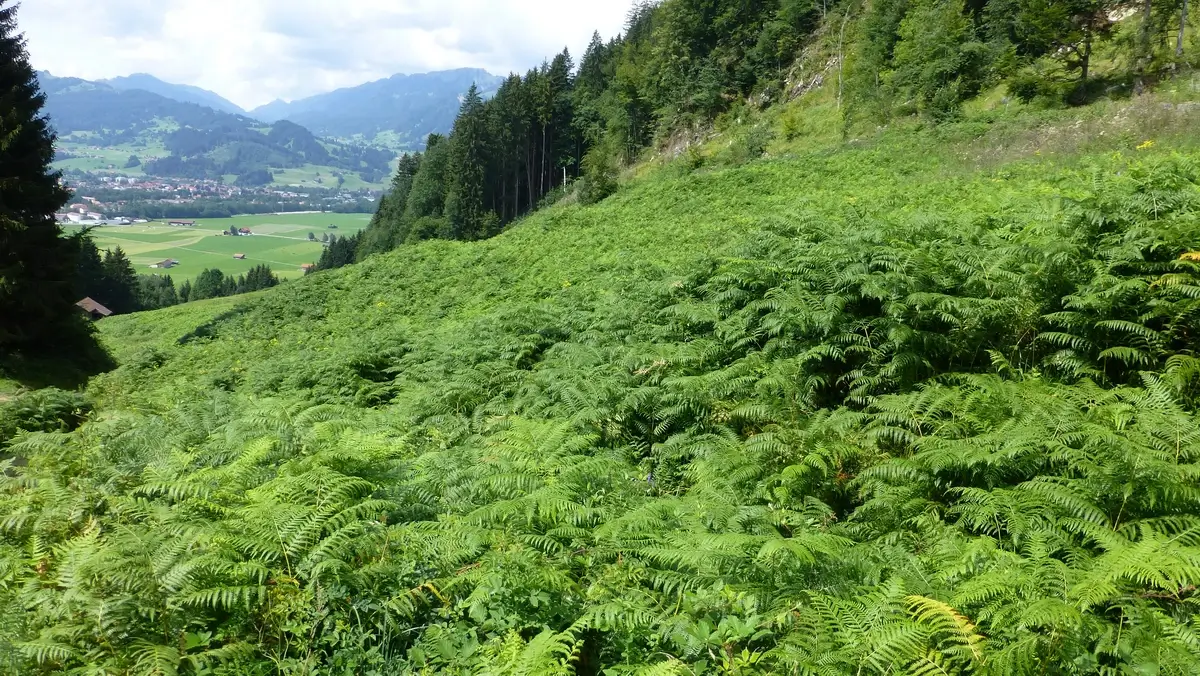
Image source: pixy.org
22. Dino-Friends: Ferns that Saw the Dinosaurs
Step into a time machine, and you’d see ferns rubbing fronds with dinosaurs! Dominating the understory during the Mesozoic Era, ferns provided a lush backdrop during the age of dinosaurs. Fossil records indicate that many fern varieties, like the Cladophlebis and Phlebopteris, coexisted with these colossal reptiles.
This ancient association paints a vivid picture of prehistoric ecosystems, with ferns playing a significant role in the diet and habitats of various dinosaur species.
23. Ferns’ Invisible Armor: The Role of Symbiotic Fungi
While ferns exhibit remarkable resilience and adaptability, they don’t go it alone. Delving into their roots reveals a fascinating partnership with mycorrhizal fungi. These fungi form symbiotic relationships with ferns, intertwining with their roots and extending their reach. In exchange for sugars produced by the fern, these fungi provide essential nutrients and water.
Research from the Smithsonian Environmental Research Center highlighted that up to 90% of land plants, including many ferns, form such partnerships. This invisible armor, powered by mutualistic fungi, underscores the interconnectedness of life in nature and ferns’ reliance on these microscopic allies.
FAQ
What are the three important things that ferns have?
Ferns possess three distinctive features that set them apart from other plants. First, they have a vascular system composed of xylem and phloem, facilitating the transport of water and nutrients. Second, they reproduce via spores instead of seeds. Finally, ferns exhibit fronds, which are their leafy structures that often unfurl in a characteristic fiddlehead pattern as they mature.
What are 5 characteristics of ferns?
- Vascular System: Ferns are vascular plants, meaning they have specialized tissues – xylem and phloem – to transport water and nutrients.
- Fronds: The leaves of ferns are typically referred to as fronds, which often start as curled structures known as fiddleheads.
- Spore Reproduction: Instead of seeds, ferns produce tiny spores, usually on the underside of their fronds, for reproduction.
- Rhizomes: Many ferns possess horizontal underground stems known as rhizomes, from which new fronds emerge.
- Absence of Flowers and Fruits: Ferns don’t produce flowers or fruits. Their reproductive process revolves entirely around the production and dispersal of spores.
What does the fern symbolize?
Throughout history and across different cultures, the fern has been a symbol of new beginnings, hope, and eternal youth. Its growth pattern, where the fronds unfurl slowly, is often seen as a symbol of life unfolding and new opportunities. In Maori culture, the silver fern represents strength, resistance, and sacredness.
Why is fern important to humans?
Ferns play several critical roles beneficial to humans. Ecologically, they prevent soil erosion, maintain moisture in forests, and offer habitats to various microorganisms and animals. Many ferns have historical medicinal uses. Additionally, ferns enhance air quality by absorbing pollutants. Aesthetically, they are popular decorative plants, adorning gardens and indoor spaces with their lush greenery.
What is the myth about ferns?
A popular myth, especially in Slavic cultures, revolves around the “fern flower.” It’s believed that ferns, which typically reproduce via spores, produce a rare and hidden flower on the eve of the Summer Solstice. This elusive flower is said to bring fortune, happiness, and magical powers to whoever finds it, though it remains a mystical entity as ferns don’t produce flowers in reality.
How long do ferns live?
The lifespan of a fern varies depending on the species and environmental conditions. While some smaller fern species might live for only a few years, larger ones, especially tree ferns, can live for several decades. With proper care, certain indoor fern varieties can thrive for 20-50 years or even longer.
What is unique about fern life cycle?
Ferns have a two-stage life cycle known as alternation of generations. The first stage is the sporophyte, the familiar leafy plant. This phase produces spores. When a spore germinates, it grows into the second stage called a gametophyte. This tiny, heart-shaped structure produces male and female reproductive cells. After fertilization, a new sporophyte grows from the gametophyte, completing the cycle.
Where do ferns grow naturally?
Ferns are versatile and can be found in a wide range of environments across the globe. They thrive in tropical rainforests, temperate woodlands, mountain ranges, and even arid desert edges. While they predominantly favor shaded, moist environments, some species are adapted to sunlit areas and dry conditions.
How do ferns reproduce?
Ferns reproduce through spores rather than seeds. Mature ferns produce spore cases, typically on the underside of their fronds. When these spores are mature, they are released into the environment. If they land in a suitable location, they germinate and grow into gametophytes, which produce male and female reproductive cells. The fusion of these cells initiates the growth of a new fern plant.
Do ferns have fruit?
No, ferns do not produce fruits. They are non-flowering plants, which means they also don’t produce flowers or seeds. Instead, ferns reproduce through spores, bypassing the flower and fruit stages that many other plants undergo.


